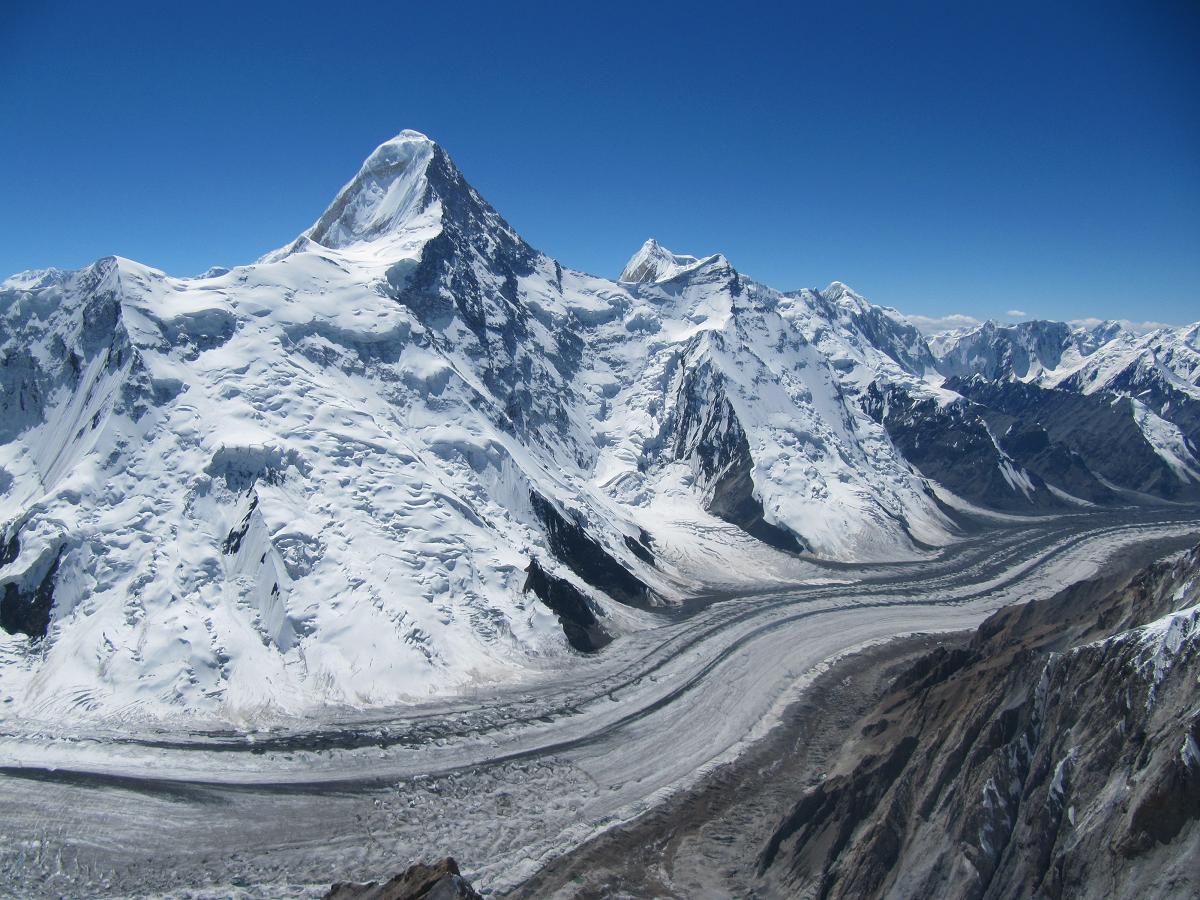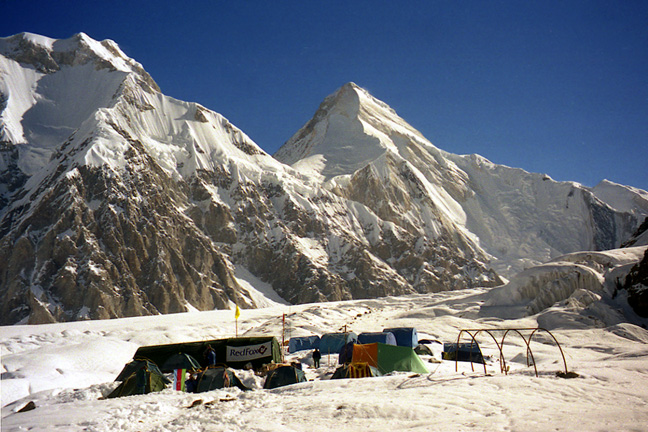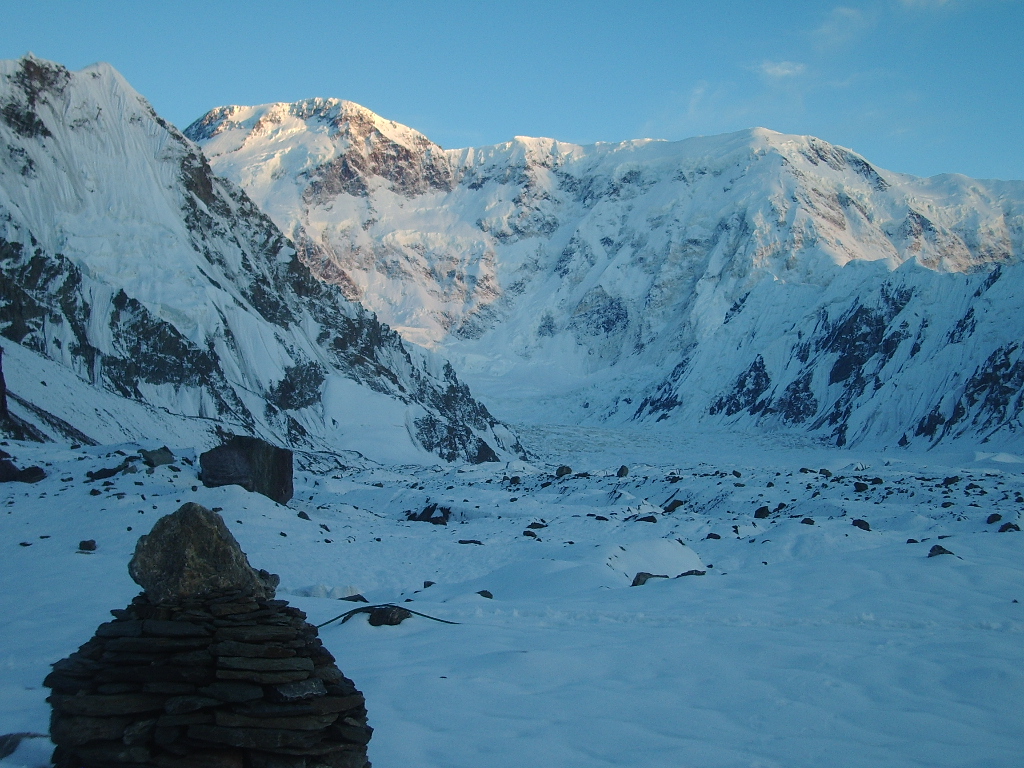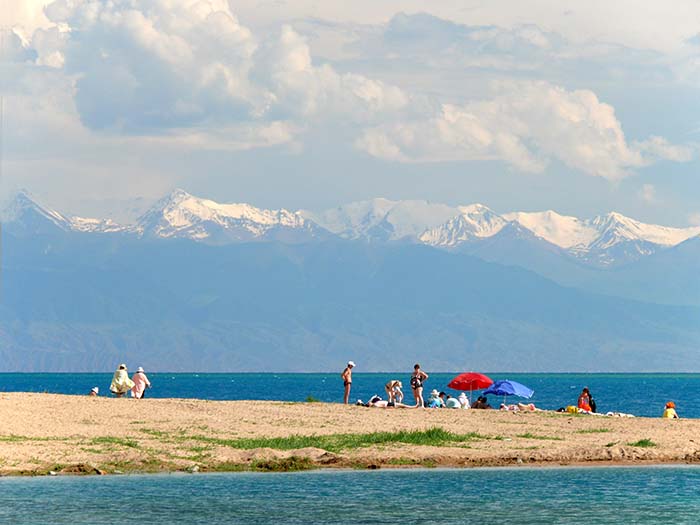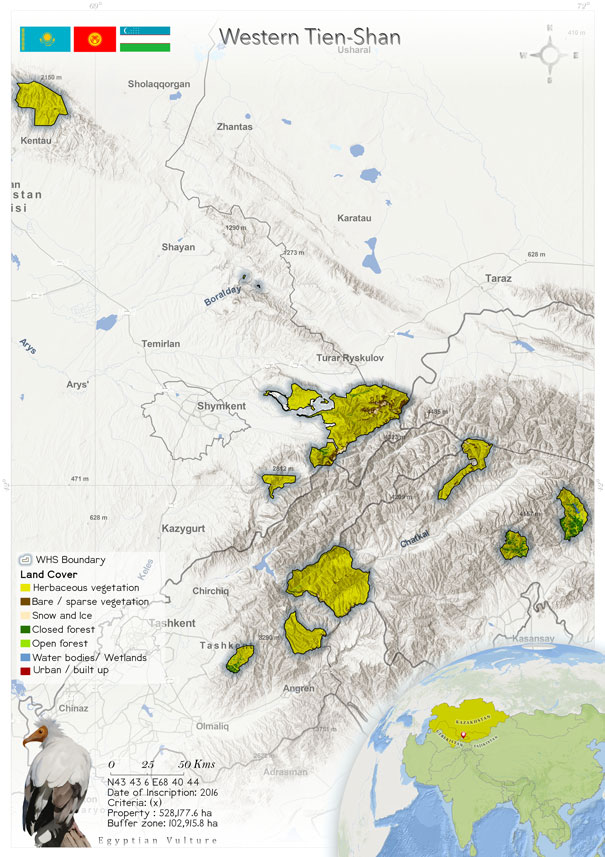
Western Tien-Shan (1490)
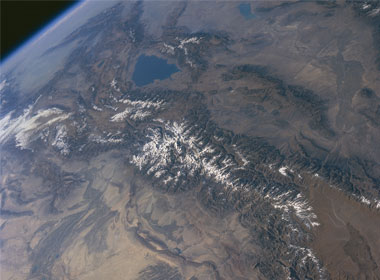 Western Tien-Shan nestles between three countries—Kyrgyzstan, Kazakhstan and Uzbekistan. This heritage site is appreciated for its astounding topography, particularly vast mountain ranges (Talass Alatau Range, Tien Shan Range), Mount Karatau, glaciers and rivers, which have produced many different types of habitat and vegetation (steppe vegetation, arid vegetation and many more). The biodiversity of Western Tien-Shan is notable for being the high level of endemism. The property is mainly covered by exotic wild relatives of fruit trees such as wild apricot, Siever’s apple and walnut, as well as Crataegus knorringiana, an extremely rare species in Tien Shan. Western Tien-Shan is a hotspot for many carnivores such as the snow leopard, Pallas’s cat, brown bear, Turkestan lynx and European marbled polecat. The heritage property consists of several MABs (Man and Biosphere) designated by UNESCO that support rich biodiversity, for instance, Chatkal Biosphere Reserve and Sairam-Ugam State National Nature Park, in Uzbekistan, Sary-Chelek, Besh-Aral State Nature Reserve and Padysha-Ata State Nature Reserve, in Kyrgyzstan, and Karatau State Nature Reserve, in Kazakhstan. Western Tien-Shan faces direct or indirect threats to the region’s biotic components. The primary concerns are overgrazing on the pasture cover, which has led to degradation of the vegetation, illegal poaching of exotic birds and animals and logging, which has led to deforestation. The management committee has representatives and staff members from each province of the property, but there is no concrete memorandum that can bring about the implementation of effective measures for conserving the OUVs of Western Tien-Shan. However, in recent times, the government bodies of the three countries have been implementing a joint legal framework that can upgrade the heritage site’s internal as well as external characteristics.
Western Tien-Shan nestles between three countries—Kyrgyzstan, Kazakhstan and Uzbekistan. This heritage site is appreciated for its astounding topography, particularly vast mountain ranges (Talass Alatau Range, Tien Shan Range), Mount Karatau, glaciers and rivers, which have produced many different types of habitat and vegetation (steppe vegetation, arid vegetation and many more). The biodiversity of Western Tien-Shan is notable for being the high level of endemism. The property is mainly covered by exotic wild relatives of fruit trees such as wild apricot, Siever’s apple and walnut, as well as Crataegus knorringiana, an extremely rare species in Tien Shan. Western Tien-Shan is a hotspot for many carnivores such as the snow leopard, Pallas’s cat, brown bear, Turkestan lynx and European marbled polecat. The heritage property consists of several MABs (Man and Biosphere) designated by UNESCO that support rich biodiversity, for instance, Chatkal Biosphere Reserve and Sairam-Ugam State National Nature Park, in Uzbekistan, Sary-Chelek, Besh-Aral State Nature Reserve and Padysha-Ata State Nature Reserve, in Kyrgyzstan, and Karatau State Nature Reserve, in Kazakhstan. Western Tien-Shan faces direct or indirect threats to the region’s biotic components. The primary concerns are overgrazing on the pasture cover, which has led to degradation of the vegetation, illegal poaching of exotic birds and animals and logging, which has led to deforestation. The management committee has representatives and staff members from each province of the property, but there is no concrete memorandum that can bring about the implementation of effective measures for conserving the OUVs of Western Tien-Shan. However, in recent times, the government bodies of the three countries have been implementing a joint legal framework that can upgrade the heritage site’s internal as well as external characteristics.
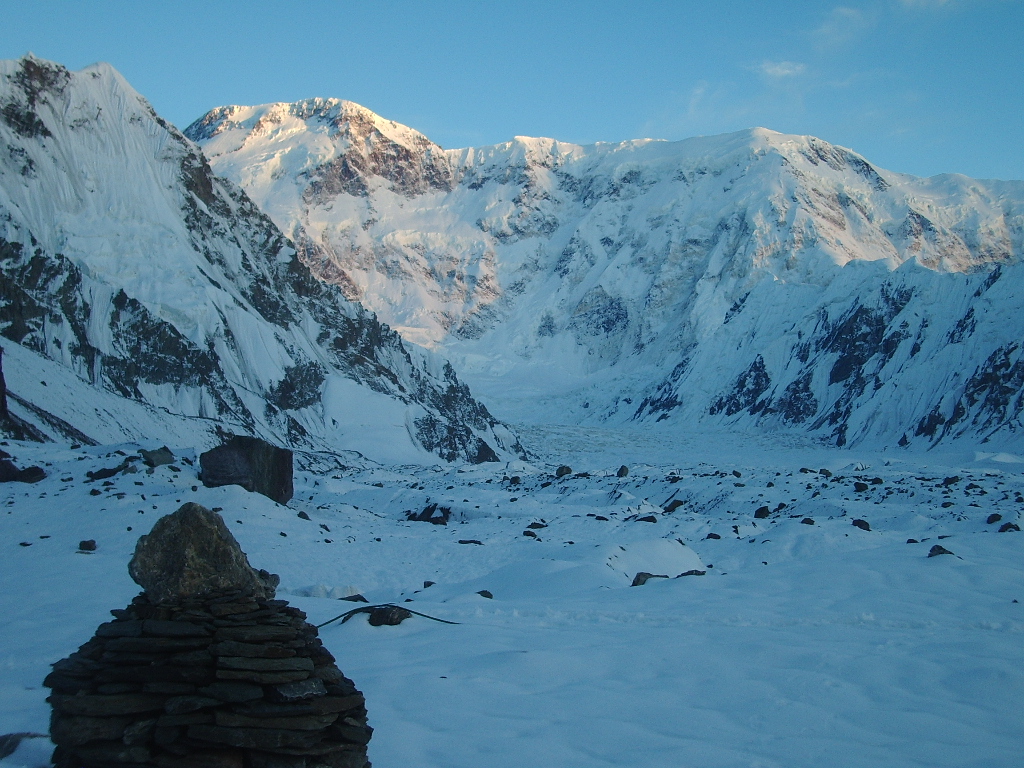 Western Tien-Shan is a transboundary heritage site with three countries, Kyrgyzstan, Kazakhstan and Uzbekistan. The site lies on one of the highest mountain ranges of the world, the Tian-Shan Mountains, spanning 2500–3000 km and falling within four countries (World Heritage Datasheet 2016). The Tien-Shan is commonly subdivided into four geographic sub-regions: Western, Inner, Northern and Central Tien-Shan. Accordingly, Western Tien-Shan is the area located in the provinces of Jalalabad and Talas, and there are short extensions in the provinces in Uzbekistan and Kazakhstan on the west (Farrington 2005). In other words, Western Tien-Shan forms a triangle between the town of Sheker, in Kyrgyzstan, Tashkent, the capital of Uzbekistan, and the Kazakhstan town of Shymkent (World Heritage Datasheet 2016). The landholdings of Western Tien-Shan differ broadly: the majority of the area is in Uzbekistan, 102,915 ha, followed by Kazakhstan (70,290 ha). A minor extent of 32,625 ha Is in Kyrgyzstan (World Heritage Datasheet 2016). The area is coldest during November–January, during which time the temperatures can go as low as -38°C locally (piedmont area). Snowfall occurs in the medium-altitude mountains. On the other hand, summers can be equally extreme, with temperatures rising as high as 47°C (Karatau). The precipitation can range from 100 mm to over 800 mm at higher altitudes, occurring mainly between February and June (World Heritage Datasheet 2016).
The topography and geology of the property are rugged, with mountain ranges, steppes, glaciers, rivers, and lakes. The three provinces of Western Tien-Shan all have different geomorphological structures. Karatu Mountains and Sairam-Ugam are the prominent mountain ranges of Western Tien-Shan in Kazakhstan, lying mainly within this country. Mount Karatau is subdivided into South-western Karatau (Greater Karatau and Boral-Daitau) and Eastern, or Lesser, Karatau, which extends 400 km to the north-west. Sairam-Ugam is twice as high as Mount Karatau, and as a result, glaciers and icy rivers are standard features of Sairam. Low, arid ridges, ravines and steppes are present throughout the property (Dzhanokmen 2017). Several rivers divide into many seasonal and permanent streams. However, the three main rivers in this part of the property are the Baiyldyr, Khantagi and Biresik Aksu-Jabagy (World Heritage Datasheet 2016). The Talass Alatau Range (3500 m asl), Sairam mountain ridges (4220 m asl), Ugam (3560 m asl), Karzhantau (2839 m asl) and Boraldaytau (1860 m asl), all belong to Western Tien-Shan (Kazakhstan 1969; Relief of Kazakhstan 1991; Republic of Kazakhstan 2006).
In Kyrgyzstan, the Khodzha-Ata creates an alpine basin and is surrounded by three distinct ridges: Chatkal, Atoinok and Bozbutoo. The ridges are up to 4000 m high. The Padysha-Ata River runs down the Padysha-Ata Range, and there are low-lying alluvial cones, mainly covered with vegetation and "adyrs" (smooth undulations with blunted peaks). The Padysha-Ata River flows through large boulders. The Chatkal River, along with its many tributaries, acts as an essential source of water for the fauna and the human community at the foothills of the ranges (World Heritage Datasheet 2016). The Naryn River is the longest and most important river in Kyrgyzstan. It is one of two rivers originating on Kyrgyz territory that join in Ferghana Valley, of Uzbekistan, to form the Syr Darya and the Kara Darya, in Osh Province (Farrington 2005).
Western Tien-Shan is a transboundary heritage site with three countries, Kyrgyzstan, Kazakhstan and Uzbekistan. The site lies on one of the highest mountain ranges of the world, the Tian-Shan Mountains, spanning 2500–3000 km and falling within four countries (World Heritage Datasheet 2016). The Tien-Shan is commonly subdivided into four geographic sub-regions: Western, Inner, Northern and Central Tien-Shan. Accordingly, Western Tien-Shan is the area located in the provinces of Jalalabad and Talas, and there are short extensions in the provinces in Uzbekistan and Kazakhstan on the west (Farrington 2005). In other words, Western Tien-Shan forms a triangle between the town of Sheker, in Kyrgyzstan, Tashkent, the capital of Uzbekistan, and the Kazakhstan town of Shymkent (World Heritage Datasheet 2016). The landholdings of Western Tien-Shan differ broadly: the majority of the area is in Uzbekistan, 102,915 ha, followed by Kazakhstan (70,290 ha). A minor extent of 32,625 ha Is in Kyrgyzstan (World Heritage Datasheet 2016). The area is coldest during November–January, during which time the temperatures can go as low as -38°C locally (piedmont area). Snowfall occurs in the medium-altitude mountains. On the other hand, summers can be equally extreme, with temperatures rising as high as 47°C (Karatau). The precipitation can range from 100 mm to over 800 mm at higher altitudes, occurring mainly between February and June (World Heritage Datasheet 2016).
The topography and geology of the property are rugged, with mountain ranges, steppes, glaciers, rivers, and lakes. The three provinces of Western Tien-Shan all have different geomorphological structures. Karatu Mountains and Sairam-Ugam are the prominent mountain ranges of Western Tien-Shan in Kazakhstan, lying mainly within this country. Mount Karatau is subdivided into South-western Karatau (Greater Karatau and Boral-Daitau) and Eastern, or Lesser, Karatau, which extends 400 km to the north-west. Sairam-Ugam is twice as high as Mount Karatau, and as a result, glaciers and icy rivers are standard features of Sairam. Low, arid ridges, ravines and steppes are present throughout the property (Dzhanokmen 2017). Several rivers divide into many seasonal and permanent streams. However, the three main rivers in this part of the property are the Baiyldyr, Khantagi and Biresik Aksu-Jabagy (World Heritage Datasheet 2016). The Talass Alatau Range (3500 m asl), Sairam mountain ridges (4220 m asl), Ugam (3560 m asl), Karzhantau (2839 m asl) and Boraldaytau (1860 m asl), all belong to Western Tien-Shan (Kazakhstan 1969; Relief of Kazakhstan 1991; Republic of Kazakhstan 2006).
In Kyrgyzstan, the Khodzha-Ata creates an alpine basin and is surrounded by three distinct ridges: Chatkal, Atoinok and Bozbutoo. The ridges are up to 4000 m high. The Padysha-Ata River runs down the Padysha-Ata Range, and there are low-lying alluvial cones, mainly covered with vegetation and "adyrs" (smooth undulations with blunted peaks). The Padysha-Ata River flows through large boulders. The Chatkal River, along with its many tributaries, acts as an essential source of water for the fauna and the human community at the foothills of the ranges (World Heritage Datasheet 2016). The Naryn River is the longest and most important river in Kyrgyzstan. It is one of two rivers originating on Kyrgyz territory that join in Ferghana Valley, of Uzbekistan, to form the Syr Darya and the Kara Darya, in Osh Province (Farrington 2005).
Criterion (vii)
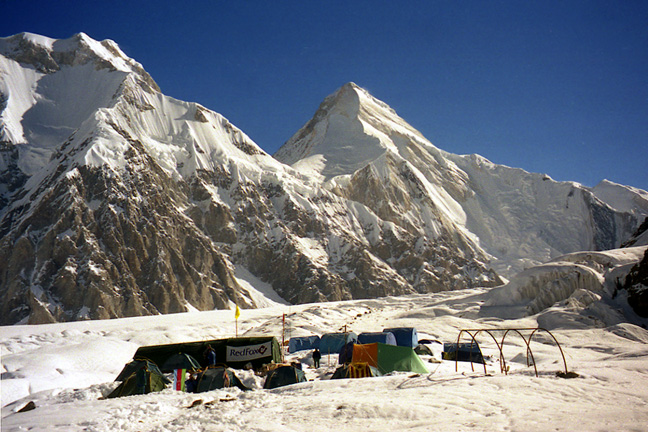 Yakushima, despite being a small island, boasts several key features including impressive mountains which rise to nearly 2,000 m, and an outstanding gradient from the high peaks of the central core down to the seacoast. The property is home to a number of extremely large diameter Japanese cedar trees, thousands of years old with the oldest and most spectacular individuals of the species found on Yakushima Island. It contains the last, best example of an ecosystem dominated by the Japanese cedar in a superb scenic setting. Thus, Yakushima is a valuable property having natural areas of biological, scientific and aesthetic significance on a small island.
Yakushima, despite being a small island, boasts several key features including impressive mountains which rise to nearly 2,000 m, and an outstanding gradient from the high peaks of the central core down to the seacoast. The property is home to a number of extremely large diameter Japanese cedar trees, thousands of years old with the oldest and most spectacular individuals of the species found on Yakushima Island. It contains the last, best example of an ecosystem dominated by the Japanese cedar in a superb scenic setting. Thus, Yakushima is a valuable property having natural areas of biological, scientific and aesthetic significance on a small island.
Criterion (x)
The Western Tien-Shan supports 14 species of flora and 18 of fauna listed as globally threatened by IUCN. Lonicera karataviensis (CR), Betula talassica (EN), Spiraeanthus schrenkianus (EN) etc. Among the fauna, these are saker falcon Falco cherrug (EN), Egyptian vulture Neophron percnopterus (EN), cinereous vulture Aegypius monachus (NT), charismatic snow leopard Unciauncia (EN), wild sheep Ovis ammon with two subspecies, nigrimontana at Karatau - 80% of the global population - and karelini), Menzbier’s marmot Marmota menzbieri, European marbled polecat Vormela peregusna (VU). Invertebrates have high level of endemism.
Status
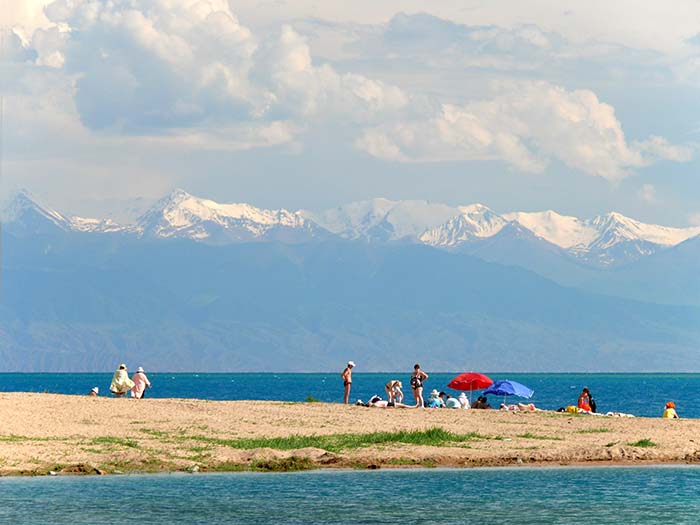 While Western Tien-Shan is a unique World Heritage Property, there are threats to its OUVs. According to the IUCN Outlook assessment, the site faces certain potential threats that may impact its geology and biodiversity. Primarily, hunting and illegal poaching of the mammals found in the Kazakhstan province of Western Tien Shan target the argali, Siberian ibex, wild boar, bear, badger and porcupine (IUCN 2015).
Next is the involvement of the indigenous people in the buffer zone of the property, which includes intense grazing of livestock. This has resulted in pasture degradation, native vegetation cover and phenology (Gong et al. 2015). Most of the affected pastures are in mountain Steppe and sub-alpine meadow–Steppe zonal pastures in the Northern, Central and West Tien-Shan mountain ranges (Nuralieva & Bekirova 2015). This particular factor has been a concern since the 1970s, when eports show that more than 36% of different zonal pastures had been severely invaded by unpalatable and alien shrub and plant species (Popova 1970; Shihotov 1976). By 2012, the extent of these areas had gone up to 49% (Adenov et al. 2012), and by 2014, the species composition of the climax vegetation in 14% of the total pasture area (1.3 million ha) reached a degradation status beyond repair (Pasture Deparment, 2014). The impact of grazing was also observed in the densely populated Chatkal region, in Uzbekistan (IUCN 2015), in the buffer zones of Sary-Chelek and within a specially allocated zone in Padysha-Ata SNR (IUCN 2015). There was also a low level of illegal grazing in Karatau State Nature Reserve (IUCN Consultation 2017). Another vital factor that is increasingly affecting the property is forest fires. Western Tien-Shan remains dry and arid during most of the year. This causes several incidents of fires, both natural and anthropogenic. Two unique plant species, the juniper and the Haloxylon sp. are extremely inflammable and can catch fire easily in the dry summers. Summer droughts and dusty storms and dry winds are common occurrences in the Tien-Shan (IUCN 2015; IUCN Consultation 2019).
The management committee of Western Tien-Shan consists of representatives of the protected areas and government members of each country putting efforts into upgrading the conservation status of the property. Since the site is a transboundary property, including three major provinces, Kyrgyzstan, Kazakhstan and Uzbekistan, the rights are owned by the government bodies of all these provinces. However, there is no significant joint transboundary protection or framework for the entire site (IUCN 2016; UNESCO 2018 whc.unesco.org). According to the SOC submitted by the State Parties, the three States Parties had drafted and signed a memorandum of understanding (MoU) regarding the management and protection of the site.
Regarding the management zoning system, there was no clarity. The State Party of Kazakhstan could provide maps relating to only the Sairam-Ugam National Nature Park component of the site in their SOC report of 2018 (IUCN 2015; IUCN 2016). Due to the lack of highly effective measures for the conservation and management of the heritage site, it is still categorized as having "significant concerns" (IUCN 2020).
While Western Tien-Shan is a unique World Heritage Property, there are threats to its OUVs. According to the IUCN Outlook assessment, the site faces certain potential threats that may impact its geology and biodiversity. Primarily, hunting and illegal poaching of the mammals found in the Kazakhstan province of Western Tien Shan target the argali, Siberian ibex, wild boar, bear, badger and porcupine (IUCN 2015).
Next is the involvement of the indigenous people in the buffer zone of the property, which includes intense grazing of livestock. This has resulted in pasture degradation, native vegetation cover and phenology (Gong et al. 2015). Most of the affected pastures are in mountain Steppe and sub-alpine meadow–Steppe zonal pastures in the Northern, Central and West Tien-Shan mountain ranges (Nuralieva & Bekirova 2015). This particular factor has been a concern since the 1970s, when eports show that more than 36% of different zonal pastures had been severely invaded by unpalatable and alien shrub and plant species (Popova 1970; Shihotov 1976). By 2012, the extent of these areas had gone up to 49% (Adenov et al. 2012), and by 2014, the species composition of the climax vegetation in 14% of the total pasture area (1.3 million ha) reached a degradation status beyond repair (Pasture Deparment, 2014). The impact of grazing was also observed in the densely populated Chatkal region, in Uzbekistan (IUCN 2015), in the buffer zones of Sary-Chelek and within a specially allocated zone in Padysha-Ata SNR (IUCN 2015). There was also a low level of illegal grazing in Karatau State Nature Reserve (IUCN Consultation 2017). Another vital factor that is increasingly affecting the property is forest fires. Western Tien-Shan remains dry and arid during most of the year. This causes several incidents of fires, both natural and anthropogenic. Two unique plant species, the juniper and the Haloxylon sp. are extremely inflammable and can catch fire easily in the dry summers. Summer droughts and dusty storms and dry winds are common occurrences in the Tien-Shan (IUCN 2015; IUCN Consultation 2019).
The management committee of Western Tien-Shan consists of representatives of the protected areas and government members of each country putting efforts into upgrading the conservation status of the property. Since the site is a transboundary property, including three major provinces, Kyrgyzstan, Kazakhstan and Uzbekistan, the rights are owned by the government bodies of all these provinces. However, there is no significant joint transboundary protection or framework for the entire site (IUCN 2016; UNESCO 2018 whc.unesco.org). According to the SOC submitted by the State Parties, the three States Parties had drafted and signed a memorandum of understanding (MoU) regarding the management and protection of the site.
Regarding the management zoning system, there was no clarity. The State Party of Kazakhstan could provide maps relating to only the Sairam-Ugam National Nature Park component of the site in their SOC report of 2018 (IUCN 2015; IUCN 2016). Due to the lack of highly effective measures for the conservation and management of the heritage site, it is still categorized as having "significant concerns" (IUCN 2020).
